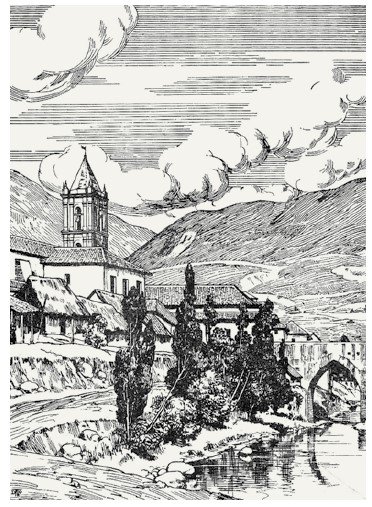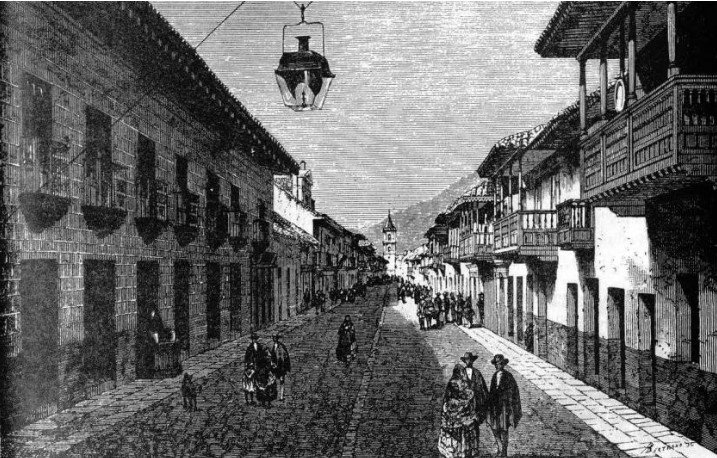
The stories of La Candelaria, Bogot
Few Bogotans would keep silent if someone asked about La Candelaria. Inevitable. We refer to one of the most representative places in Bogotá. Its history is told since prehispanic times. It would be so difficult to imagine every landscape that this city spot has projected. In every moment of its history, La Candelaria has been a witness to endless scenes.

Muiscas godsBogotá was originally known as Bakatá. The Muiscas were the native indigene community who inhabited this territory. Although is hard to imagine, it was so easy to bump into some river or lake through the old paths of Bogotá. One of the most important was the San Francisco River. It represented the central place that water had for Muisca’s culture. Bakatá meant ploughland (Tierra de Labranza).

After giving birth, the women of this indigenous group bathed with their babies with the water of this torrent. Being under the water would represent love, care, and oneness between the members of the community. At the same time, the river had substantial importance for the development of practices such as agriculture. As descending from the eastern hills, the water flow gave great fertility to lands next to the affluent. The food left by the earth nourished Muiscas for a long time. As well as the San Francisco, there were other important rivers as San Agustín, Fucha, and Arzobispo. Sometimes, the beauty of these places was caught by the work of some artists. This was the case of Tequendama Falls (Salto Del Tequendama), a splendid place at other times.

The rhythms and lifestyles of La Candelaria’s village have been deeply transformed along with history. The slow walks of the Muiscas were substituted by the bohemian rounds of poets, literati, and draftsman who met frequently in various coffee shops of the Bogotá downtown. One of the most relevant for many years was the Café Windsor. In its seats could be seen people like Pedro Nel Gómez, a prominent artist who painted several scenes of Colombian history. Also, it would have been possible to come across Ricardo Rendón, a deeply cynical cartoonist who denounced the conservative governments that led the destinies of Colombia. His silent, but fulminating traces, were used to denounce the abuses of the public forces and the clumsiness of the Colombian governors.

Many have used painting and art to utter their ideas out loud. In Bogotá is not a surprise to run into coloured walls, written edges made by nocturnal inhabitants who enter the city to leave their voice. In this city, there is graffiti on bridges, avenues, and streets. There you can see the signatures of different artists, drawings and messages of all political tone. Single words, revolutionary alerts, football cheers, lyrics, and the image of a twentieth-century martyr. They’re all there, in the middle of ten million inhabitants and a lot of cars. These images have a very particular history, written in songs and drawn on the most hidden walls of this city.
As if they were not enough, the cinema has been responsible for composing more stories about the streets of Bogotá. This city has been a model portrayed in numerous artworks. Since the first years of the 20th century, various films started to be produced, interested in making a portrait of the living conditions in the city and the country. One of the most important works could be Wandering Shadows (2004) (La Sombra del Caminante), directed by the outstanding director Ciro Guerra, who has also produced recognized and award-winning works such as Embrace of the Serpent (2015) (El Abrazo de la Serpiente) and Birds of Passage (2018) (Pájaros de Verano). The life of the urban walkers of Bogotá was the main concern in this particular work, where the story of two men who wander around the city streets is told. Unfortunately, both have deplorable living conditions. Normally, the characters had to find a corner of Bogotá to sleep at night, an abhorrent lifestyle that affects more and more people. During history, these men establish a friendship relationship, fragmented when one of them confesses that he commanded the paramilitary group that murdered the other’s family.
